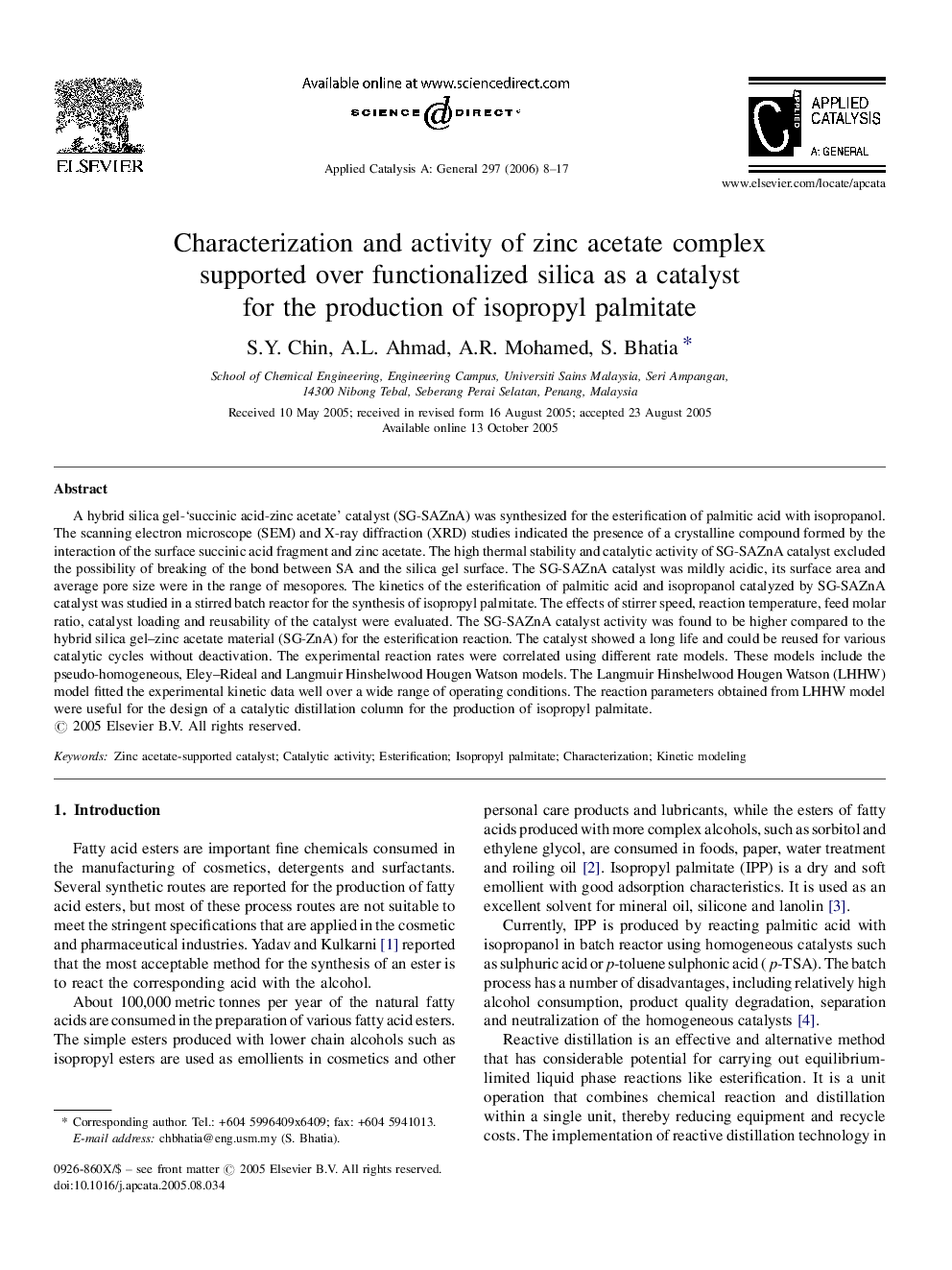| Article ID | Journal | Published Year | Pages | File Type |
|---|---|---|---|---|
| 44341 | Applied Catalysis A: General | 2006 | 10 Pages |
A hybrid silica gel-‘succinic acid-zinc acetate’ catalyst (SG-SAZnA) was synthesized for the esterification of palmitic acid with isopropanol. The scanning electron microscope (SEM) and X-ray diffraction (XRD) studies indicated the presence of a crystalline compound formed by the interaction of the surface succinic acid fragment and zinc acetate. The high thermal stability and catalytic activity of SG-SAZnA catalyst excluded the possibility of breaking of the bond between SA and the silica gel surface. The SG-SAZnA catalyst was mildly acidic, its surface area and average pore size were in the range of mesopores. The kinetics of the esterification of palmitic acid and isopropanol catalyzed by SG-SAZnA catalyst was studied in a stirred batch reactor for the synthesis of isopropyl palmitate. The effects of stirrer speed, reaction temperature, feed molar ratio, catalyst loading and reusability of the catalyst were evaluated. The SG-SAZnA catalyst activity was found to be higher compared to the hybrid silica gel–zinc acetate material (SG-ZnA) for the esterification reaction. The catalyst showed a long life and could be reused for various catalytic cycles without deactivation. The experimental reaction rates were correlated using different rate models. These models include the pseudo-homogeneous, Eley–Rideal and Langmuir Hinshelwood Hougen Watson models. The Langmuir Hinshelwood Hougen Watson (LHHW) model fitted the experimental kinetic data well over a wide range of operating conditions. The reaction parameters obtained from LHHW model were useful for the design of a catalytic distillation column for the production of isopropyl palmitate.
